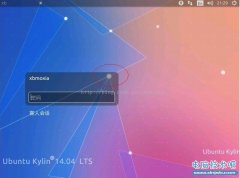Linux下线程同步机制
发布时间:2014-09-05 17:42:19作者:知识屋
线程的最大特点是资源的共享性,但资源共享中的同步问题是多线程编程的难点。linux下提供了多种方式来处理线程同步,最常用的是互斥锁、条件变量和信号灯和异步信号等。
一、互斥锁
尽管在Posix Thread中同样可以使用IPC的信号量机制来实现互斥锁mutex功能,但显然semphore的功能过于强大了,在Posix Thread中定义了另外一套专门用于线程同步的mutex函数。
1. 创建和销毁
有两种方法创建互斥锁,静态方式和动态方式。
POSIX定义了一个宏PTHREAD_MUTEX_INITIALIZER来静态初始化互斥锁,方法如下: pthread_mutex_t mutex=PTHREAD_MUTEX_INITIALIZER; 在LinuxThreads实现中,pthread_mutex_t是一个结构,而PTHREAD_MUTEX_INITIALIZER则是一个结构常量。
动态方式是采用pthread_mutex_init()函数来初始化互斥锁,API定义如下: int pthread_mutex_init(pthread_mutex_t *mutex, const pthread_mutexattr_t *mutexattr) 其中mutexattr用于指定互斥锁属性(见下),如果为NULL则使用缺省属性。
pthread_mutex_destroy()用于注销一个互斥锁,API定义如下: int pthread_mutex_destroy(pthread_mutex_t *mutex) 销毁一个互斥锁即意味着释放它所占用的资源,且要求锁当前处于开放状态。由于在Linux中,互斥锁并不占用任何资源,因此LinuxThreads中的pthread_mutex_destroy()除了检查锁状态以外(锁定状态则返回EBUSY)没有其他动作。
2. 互斥锁属性
互斥锁的属性在创建锁的时候指定,在LinuxThreads实现中仅有一个锁类型属性,不同的锁类型在试图对一个已经被锁定的互斥锁加锁时表现不同。当前(glibc2.2.3,linuxthreads0.9)有四个值可供选择:
PTHREAD_MUTEX_TIMED_NP,这是缺省值,也就是普通锁。当一个线程加锁以后,其余请求锁的线程将形成一个等待队列,并在解锁后按优先级获得锁。这种锁策略保证了资源分配的公平性。
PTHREAD_MUTEX_RECURSIVE_NP,嵌套锁,允许同一个线程对同一个锁成功获得多次,并通过多次unlock解锁。如果是不同线程请求,则在加锁线程解锁时重新竞争。
PTHREAD_MUTEX_ERRORCHECK_NP,检错锁,如果同一个线程请求同一个锁,则返回EDEADLK,否则与PTHREAD_MUTEX_TIMED_NP类型动作相同。这样就保证当不允许多次加锁时不会出现最简单情况下的死锁。
PTHREAD_MUTEX_ADAPTIVE_NP,适应锁,动作最简单的锁类型,仅等待解锁后重新竞争。
3. 锁操作
锁操作主要包括加锁pthread_mutex_lock()、解锁pthread_mutex_unlock()和测试加锁pthread_mutex_trylock()三个,不论哪种类型的锁,都不可能被两个不同的线程同时得到,而必须等待解锁。对于普通锁和适应锁类型,解锁者可以是同进程内任何线程;而检错锁则必须由加锁者解锁才有效,否则返回EPERM;对于嵌套锁,文档和实现要求必须由加锁者解锁,但实验结果表明并没有这种限制,这个不同目前还没有得到解释。在同一进程中的线程,如果加锁后没有解锁,则任何其他线程都无法再获得锁。
//加锁和解锁
int pthread_mutex_lock(pthread_mutex_t *mutex) int pthread_mutex_unlock(pthread_mutex_t *mutex)int pthread_mutex_trylock(pthread_mutex_t *mutex)
pthread_mutex_trylock()语义与pthread_mutex_lock()类似,不同的是在锁已经被占据时返回EBUSY而不是挂起等待。
4. 其他
POSIX线程锁机制的Linux实现都不是取消点,因此,延迟取消类型的线程不会因收到取消信号而离开加锁等待。值得注意的是,如果线程在加锁后解锁前被取消,锁将永远保持锁定状态,因此如果在关键区段内有取消点存在,或者设置了异步取消类型,则必须在退出回调函数中解锁。
这个锁机制同时也不是异步信号安全的,也就是说,不应该在信号处理过程中使用互斥锁,否则容易造成死锁。
#include <cstdio>#include <cstdlib>#include <unistd.h>#include <pthread.h>#include "iostream"using namespace std;pthread_mutex_t mutex = PTHREAD_MUTEX_INITIALIZER;int tmp;void* thread(void *arg){ cout << "thread id is " << pthread_self() << endl; pthread_mutex_lock(&mutex); tmp = 12; cout << "Now a is " << tmp << endl; pthread_mutex_unlock(&mutex); return NULL;}int main(){ pthread_t id; cout << "main thread id is " << pthread_self() << endl; tmp = 3; cout << "In main func tmp = " << tmp << endl; if (!pthread_create(&id, NULL, thread, NULL)) { cout << "Create thread success!" << endl; } else { cout << "Create thread failed!" << endl; } pthread_join(id, NULL); pthread_mutex_destroy(&mutex); return 0;}二、条件变量
条件变量是利用线程间共享的全局变量进行同步的一种机制,主要包括两个动作:一个线程等待"条件变量的条件成立"而挂起;另一个线程使"条件成立"(给出条件成立信号)。为了防止竞争,条件变量的使用总是和一个互斥锁结合在一起。
1. 创建和注销
条件变量和互斥锁一样,都有静态动态两种创建方式,静态方式使用PTHREAD_COND_INITIALIZER常量,如下:
pthread_cond_t cond=PTHREAD_COND_INITIALIZER
动态方式调用pthread_cond_init()函数,API定义如下:
int pthread_cond_init(pthread_cond_t *cond, pthread_condattr_t *cond_attr)
尽管POSIX标准中为条件变量定义了属性,但在LinuxThreads中没有实现,因此cond_attr值通常为NULL,且被忽略。
注销一个条件变量需要调用pthread_cond_destroy(),只有在没有线程在该条件变量上等待的时候才能注销这个条件变量,否则返回EBUSY。因为Linux实现的条件变量没有分配什么资源,所以注销动作只包括检查是否有等待线程。API定义如下:
int pthread_cond_destroy(pthread_cond_t *cond)
2. 等待和激发
int pthread_cond_wait(pthread_cond_t *cond, pthread_mutex_t *mutex)int pthread_cond_timedwait(pthread_cond_t *cond, pthread_mutex_t *mutex, const struct timespec *abstime)
等待条件有两种方式:无条件等待pthread_cond_wait()和计时等待pthread_cond_timedwait(),其中计时等待方式如果在给定时刻前条件没有满足,则返回ETIMEOUT,结束等待,其中abstime以与time()系统调用相同意义的绝对时间形式出现,0表示格林尼治时间1970年1月1日0时0分0秒。
无论哪种等待方式,都必须和一个互斥锁配合,以防止多个线程同时请求pthread_cond_wait()(或pthread_cond_timedwait(),下同)的竞争条件(Race Condition)。mutex互斥锁必须是普通锁(PTHREAD_MUTEX_TIMED_NP)或者适应锁(PTHREAD_MUTEX_ADAPTIVE_NP),且在调用pthread_cond_wait()前必须由本线程加锁(pthread_mutex_lock()),而在更新条件等待队列以前,mutex保持锁定状态,并在线程挂起进入等待前解锁。在条件满足从而离开pthread_cond_wait()之前,mutex将被重新加锁,以与进入pthread_cond_wait()前的加锁动作对应。
激发条件有两种形式,pthread_cond_signal()激活一个等待该条件的线程,存在多个等待线程时按入队顺序激活其中一个;而pthread_cond_broadcast()则激活所有等待线程。
3. 其他
pthread_cond_wait()和pthread_cond_timedwait()都被实现为取消点,因此,在该处等待的线程将立即重新运行,在重新锁定mutex后离开pthread_cond_wait(),然后执行取消动作。也就是说如果pthread_cond_wait()被取消,mutex是保持锁定状态的,因而需要定义退出回调函数来为其解锁。
以下示例集中演示了互斥锁和条件变量的结合使用,以及取消对于条件等待动作的影响。在例子中,有两个线程被启动,并等待同一个条件变量,如果不使用退出回调函数(见范例中的注释部分),则tid2将在pthread_mutex_lock()处永久等待。如果使用回调函数,则tid2的条件等待及主线程的条件激发都能正常工作。
#include <stdio.h>#include <pthread.h>#include <unistd.h>pthread_mutex_t mutex;pthread_cond_t cond;void * child1(void *arg){ pthread_cleanup_push(pthread_mutex_unlock,&mutex); /* comment 1 */ while(1){ printf("thread 1 get running /n"); printf("thread 1 pthread_mutex_lock returns %d/n",pthread_mutex_lock(&mutex)); pthread_cond_wait(&cond,&mutex); printf("thread 1 condition applied/n"); pthread_mutex_unlock(&mutex); sleep(5); } pthread_cleanup_pop(0); /* comment 2 */}void *child2(void *arg){ while(1){ sleep(3); /* comment 3 */ printf("thread 2 get running./n"); printf("thread 2 pthread_mutex_lock returns %d/n", pthread_mutex_lock(&mutex)); pthread_cond_wait(&cond,&mutex); printf("thread 2 condition applied/n"); pthread_mutex_unlock(&mutex); sleep(1); }}int main(void){ int tid1,tid2; printf("hello, condition variable test/n"); pthread_mutex_init(&mutex,NULL); pthread_cond_init(&cond,NULL); pthread_create(&tid1,NULL,child1,NULL); pthread_create(&tid2,NULL,child2,NULL); do{ sleep(2); /* comment 4 */ pthread_cancel(tid1); /* comment 5 */ sleep(2); /* comment 6 */ pthread_cond_signal(&cond); }while(1); sleep(100); pthread_exit(0);} #include <stdio.h> #include <pthread.h> #include "stdlib.h" #include "unistd.h" pthread_mutex_t mutex; pthread_cond_t cond; void hander(void *arg) { free(arg); (void)pthread_mutex_unlock(&mutex); } void *thread1(void *arg) { pthread_cleanup_push(hander, &mutex); while(1) { printf("thread1 is running/n"); pthread_mutex_lock(&mutex); pthread_cond_wait(&cond, &mutex); printf("thread1 applied the condition/n"); pthread_mutex_unlock(&mutex); sleep(4); } pthread_cleanup_pop(0); } void *thread2(void *arg) { while(1) { printf("thread2 is running/n"); pthread_mutex_lock(&mutex); pthread_cond_wait(&cond, &mutex); printf("thread2 applied the condition/n"); pthread_mutex_unlock(&mutex); sleep(1); } } int main() { pthread_t thid1,thid2; printf("condition variable study!/n"); pthread_mutex_init(&mutex, NULL); pthread_cond_init(&cond, NULL); pthread_create(&thid1, NULL, thread1, NULL); pthread_create(&thid2, NULL, thread2, NULL); sleep(1); do { pthread_cond_signal(&cond); }while(1); sleep(20); pthread_exit(0); return 0; } #include <pthread.h> #include <unistd.h> #include "stdio.h" #include "stdlib.h" static pthread_mutex_t mtx = PTHREAD_MUTEX_INITIALIZER; static pthread_cond_t cond = PTHREAD_COND_INITIALIZER; struct node { int n_number; struct node *n_next; }*head = NULL; static void cleanup_handler(void *arg) { printf("Cleanup handler of second thread./n"); free(arg); (void)pthread_mutex_unlock(&mtx); } static void *thread_func(void *arg) { struct node *p = NULL; pthread_cleanup_push(cleanup_handler, p); while (1) { //这个mutex主要是用来保证pthread_cond_wait的并发性 pthread_mutex_lock(&mtx); while (head == NULL) { //这个while要特别说明一下,单个pthread_cond_wait功能很完善,为何 //这里要有一个while (head == NULL)呢?因为pthread_cond_wait里的线 //程可能会被意外唤醒,如果这个时候head != NULL,则不是我们想要的情况。 //这个时候,应该让线程继续进入pthread_cond_wait // pthread_cond_wait会先解除之前的pthread_mutex_lock锁定的mtx, //然后阻塞在等待对列里休眠,直到再次被唤醒(大多数情况下是等待的条件成立 //而被唤醒,唤醒后,该进程会先锁定先pthread_mutex_lock(&mtx);,再读取资源 //用这个流程是比较清楚的 pthread_cond_wait(&cond, &mtx); p = head; head = head->n_next; printf("Got %d from front of queue/n", p->n_number); free(p); } pthread_mutex_unlock(&mtx); //临界区数据操作完毕,释放互斥锁 } pthread_cleanup_pop(0); return 0; } int main(void) { pthread_t tid; int i; struct node *p; //子线程会一直等待资源,类似生产者和消费者,但是这里的消费者可以是多个消费者,而 //不仅仅支持普通的单个消费者,这个模型虽然简单,但是很强大 pthread_create(&tid, NULL, thread_func, NULL); sleep(1); for (i = 0; i < 10; i++) { p = (struct node*)malloc(sizeof(struct node)); p->n_number = i; pthread_mutex_lock(&mtx); //需要操作head这个临界资源,先加锁, p->n_next = head; head = p; pthread_cond_signal(&cond); pthread_mutex_unlock(&mtx); //解锁 sleep(1); } printf("thread 1 wanna end the line.So cancel thread 2./n"); //关于pthread_cancel,有一点额外的说明,它是从外部终止子线程,子线程会在最近的取消点,退出 //线程,而在我们的代码里,最近的取消点肯定就是pthread_cond_wait()了。 pthread_cancel(tid); pthread_join(tid, NULL); printf("All done -- exiting/n"); return 0; }如果不做注释5的pthread_cancel()动作,即使没有那些sleep()延时操作,child1和child2都能正常工作。注释3和注释4的延迟使得child1有时间完成取消动作,从而使child2能在child1退出之后进入请求锁操作。如果没有注释1和注释2的回调函数定义,系统将挂起在child2请求锁的地方;而如果同时也不做注释3和注释4的延时,child2能在child1完成取消动作以前得到控制,从而顺利执行申请锁的操作,但却可能挂起在pthread_cond_wait()中,因为其中也有申请mutex的操作。child1函数给出的是标准的条件变量的使用方式:回调函数保护,等待条件前锁定,pthread_cond_wait()返回后解锁。
条件变量机制不是异步信号安全的,也就是说,在信号处理函数中调用pthread_cond_signal()或者pthread_cond_broadcast()很可能引起死锁。
三、信号灯
信号灯与互斥锁和条件变量的主要不同在于"灯"的概念,灯亮则意味着资源可用,灯灭则意味着不可用。如果说后两中同步方式侧重于"等待"操作,即资源不可用的话,信号灯机制则侧重于点灯,即告知资源可用;没有等待线程的解锁或激发条件都是没有意义的,而没有等待灯亮的线程的点灯操作则有效,且能保持灯亮状态。当然,这样的操作原语也意味着更多的开销。
信号灯的应用除了灯亮/灯灭这种二元灯以外,也可以采用大于1的灯数,以表示资源数大于1,这时可以称之为多元灯。
1. 创建和注销
POSIX信号灯标准定义了有名信号灯和无名信号灯两种,但LinuxThreads的实现仅有无名灯,同时有名灯除了总是可用于多进程之间以外,在使用上与无名灯并没有很大的区别,因此下面仅就无名灯进行讨论。
int sem_init(sem_t *sem, int pshared, unsigned int value)这是创建信号灯的API,其中value为信号灯的初值,pshared表示是否为多进程共享而不仅仅是用于一个进程。LinuxThreads没有实现多进程共享信号灯,因此所有非0值的pshared输入都将使sem_init()返回-1,且置errno为ENOSYS。初始化好的信号灯由sem变量表征,用于以下点灯、灭灯操作。
int sem_destroy(sem_t * sem)被注销的信号灯sem要求已没有线程在等待该信号灯,否则返回-1,且置errno为EBUSY。除此之外,LinuxThreads的信号灯注销函数不做其他动作。
2. 点灯和灭灯
int sem_post(sem_t * sem)
点灯操作将信号灯值原子地加1,表示增加一个可访问的资源。
int sem_wait(sem_t * sem)int sem_trywait(sem_t * sem)
sem_wait()为等待灯亮操作,等待灯亮(信号灯值大于0),然后将信号灯原子地减1,并返回。sem_trywait()为sem_wait()的非阻塞版,如果信号灯计数大于0,则原子地减1并返回0,否则立即返回-1,errno置为EAGAIN。
3. 获取灯值
int sem_getvalue(sem_t * sem, int * sval)
读取sem中的灯计数,存于*sval中,并返回0。
4. 其他
sem_wait()被实现为取消点,而且在支持原子"比较且交换"指令的体系结构上,sem_post()是唯一能用于异步信号处理函数的POSIX异步信号安全的API。
#include <stdlib.h> #include <stdio.h> #include <unistd.h> #include <pthread.h> #include <semaphore.h> #include <errno.h> #define return_if_fail(p) if((p) == 0){printf ("[%s]:func error!/n", __func__);return;} typedef struct _PrivInfo { sem_t s1; sem_t s2; time_t end_time; }PrivInfo; static void info_init (PrivInfo* thiz); static void info_destroy (PrivInfo* thiz); static void* pthread_func_1 (PrivInfo* thiz); static void* pthread_func_2 (PrivInfo* thiz); int main (int argc, char** argv) { pthread_t pt_1 = 0; pthread_t pt_2 = 0; int ret = 0; PrivInfo* thiz = NULL; thiz = (PrivInfo* )malloc (sizeof (PrivInfo)); if (thiz == NULL) { printf ("[%s]: Failed to malloc priv./n"); return -1; } info_init (thiz); ret = pthread_create (&pt_1, NULL, (void*)pthread_func_1, thiz); if (ret != 0) { perror ("pthread_1_create:"); } ret = pthread_create (&pt_2, NULL, (void*)pthread_func_2, thiz); if (ret != 0) { perror ("pthread_2_create:"); } pthread_join (pt_1, NULL); pthread_join (pt_2, NULL); info_destroy (thiz); return 0; } static void info_init (PrivInfo* thiz) { return_if_fail (thiz != NULL); thiz->end_time = time(NULL) + 10; sem_init (&thiz->s1, 0, 1); sem_init (&thiz->s2, 0, 0); return; } static void info_destroy (PrivInfo* thiz) { return_if_fail (thiz != NULL); sem_destroy (&thiz->s1); sem_destroy (&thiz->s2); free (thiz); thiz = NULL; return; } static void* pthread_func_1 (PrivInfo* thiz) { return_if_fail(thiz != NULL); while (time(NULL) < thiz->end_time) { sem_wait (&thiz->s2); printf ("pthread1: pthread1 get the lock./n"); sem_post (&thiz->s1); printf ("pthread1: pthread1 unlock/n"); sleep (1); } return; } static void* pthread_func_2 (PrivInfo* thiz) { return_if_fail (thiz != NULL); while (time (NULL) < thiz->end_time) { sem_wait (&thiz->s1); printf ("pthread2: pthread2 get the unlock./n"); sem_post (&thiz->s2); printf ("pthread2: pthread2 unlock./n"); sleep (1); } return; }四、异步信号
由于LinuxThreads是在核外使用核内轻量级进程实现的线程,所以基于内核的异步信号操作对于线程也是有效的。但同时,由于异步信号总是实际发往某个进程,所以无法实现POSIX标准所要求的"信号到达某个进程,然后再由该进程将信号分发到所有没有阻塞该信号的线程中"原语,而是只能影响到其中一个线程。
POSIX异步信号同时也是一个标准C库提供的功能,主要包括信号集管理(sigemptyset()、sigfillset()、sigaddset()、sigdelset()、sigismember()等)、信号处理函数安装(sigaction())、信号阻塞控制(sigprocmask())、被阻塞信号查询(sigpending())、信号等待(sigsuspend())等,它们与发送信号的kill()等函数配合就能实现进程间异步信号功能。LinuxThreads围绕线程封装了sigaction()何raise(),本节集中讨论LinuxThreads中扩展的异步信号函数,包括pthread_sigmask()、pthread_kill()和sigwait()三个函数。毫无疑问,所有POSIX异步信号函数对于线程都是可用的。
int pthread_sigmask(int how, const sigset_t *newmask, sigset_t *oldmask)
设置线程的信号屏蔽码,语义与sigprocmask()相同,但对不允许屏蔽的Cancel信号和不允许响应的Restart信号进行了保护。被屏蔽的信号保存在信号队列中,可由sigpending()函数取出。
int pthread_kill(pthread_t thread, int signo)
向thread号线程发送signo信号。实现中在通过thread线程号定位到对应进程号以后使用kill()系统调用完成发送。
int sigwait(const sigset_t *set, int *sig)
挂起线程,等待set中指定的信号之一到达,并将到达的信号存入*sig中。POSIX标准建议在调用sigwait()等待信号以前,进程中所有线程都应屏蔽该信号,以保证仅有sigwait()的调用者获得该信号,因此,对于需要等待同步的异步信号,总是应该在创建任何线程以前调用pthread_sigmask()屏蔽该信号的处理。而且,调用sigwait()期间,原来附接在该信号上的信号处理函数不会被调用。
如果在等待期间接收到Cancel信号,则立即退出等待,也就是说sigwait()被实现为取消点。
五、其他同步方式
除了上述讨论的同步方式以外,其他很多进程间通信手段对于LinuxThreads也是可用的,比如基于文件系统的IPC(管道、Unix域Socket等)、消息队列(Sys.V或者Posix的)、System V的信号灯等。只有一点需要注意,LinuxThreads在核内是作为共享存储区、共享文件系统属性、共享信号处理、共享文件描述符的独立进程看待的。
六、条件变量与互斥锁、信号量的区别
1).互斥锁必须总是由给它上锁的线程解锁,信号量的挂出即不必由执行过它的等待操作的同一进程执行。一个线程可以等待某个给定信号灯,而另一个线程可以挂出该信号灯。
2).互斥锁要么锁住,要么被解开(二值状态,类型二值信号量)
3).由于信号量有一个与之关联的状态(它的计数值),信号量挂出操作总是被记住。然而当向一个条件变量发送信号时,如果没有线程等待在该条件变量上,那么该信号将丢失。
4).互斥锁是为了上锁而设计的,条件变量是为了等待而设计的,信号灯即可用于上锁,也可用于等待,因而可能导致更多的开销和更高的复杂性。
相关知识
-

linux一键安装web环境全攻略 在linux系统中怎么一键安装web环境方法
-

Linux网络基本网络配置方法介绍 如何配置Linux系统的网络方法
-
Linux下DNS服务器搭建详解 Linux下搭建DNS服务器和配置文件
-
对Linux进行详细的性能监控的方法 Linux 系统性能监控命令详解
-
linux系统root密码忘了怎么办 linux忘记root密码后找回密码的方法
-
Linux基本命令有哪些 Linux系统常用操作命令有哪些
-
Linux必学的网络操作命令 linux网络操作相关命令汇总
-

linux系统从入侵到提权的详细过程 linux入侵提权服务器方法技巧
-

linux系统怎么用命令切换用户登录 Linux切换用户的命令是什么
-
在linux中添加普通新用户登录 如何在Linux中添加一个新的用户
软件推荐
更多 >-
1
 专为国人订制!Linux Deepin新版发布
专为国人订制!Linux Deepin新版发布2012-07-10
-
2
CentOS 6.3安装(详细图解教程)
-
3
Linux怎么查看网卡驱动?Linux下查看网卡的驱动程序
-
4
centos修改主机名命令
-
5
Ubuntu或UbuntuKyKin14.04Unity桌面风格与Gnome桌面风格的切换
-
6
FEDORA 17中设置TIGERVNC远程访问
-
7
StartOS 5.0相关介绍,新型的Linux系统!
-
8
解决vSphere Client登录linux版vCenter失败
-
9
LINUX最新提权 Exploits Linux Kernel <= 2.6.37
-
10
nginx在网站中的7层转发功能
























